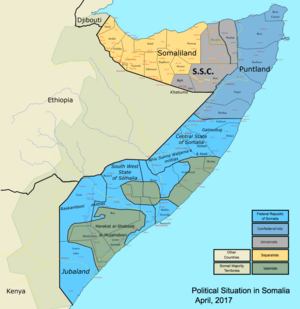BAGHDAD — A wave of bombings targeting Shiites in Iraq killed 72 people on Thursday, deepening sectarian tensions that exploded just after the last American troops left the country in mid-December.
The coordinated attacks targeting Shiites bore the hallmarks of Sunni insurgents linked to al-Qaida, although there was no immediate claim of responsibility.
By Sameer N. Yacoub - The Associated Press
Posted : Thursday Jan 5, 2012 9:51:40 EST
BAGHDAD — A wave of bombings targeting Shiites in Iraq killed 72 people on Thursday, deepening sectarian tensions that exploded just after the last American troops left the country in mid-December.
The coordinated attacks targeting Shiites bore the hallmarks of Sunni insurgents linked to al-Qaida, although there was no immediate claim of responsibility.
The bombings began early in the morning when explosions struck two Shiite neighborhoods in Baghdad, killing at least 27 people. A few hours later, a suicide attack hit Shiite pilgrims heading to the holy Shiite city of Karbala, killing 45, said provincial official Quosay al-Abadi. The explosions took place near Nasiriyah, about 200 miles southeast of Baghdad. Hospital officials confirmed the causalities.
The blasts occurred in the run-up to Arbaeen, a Shiite holy day which marks the end of 40 days of mourning that follow the anniversary of the death of Imam Hussein, a revered Shiite figure. During this time, Shiite pilgrims from across Iraq make their way to Karbala, south of Baghdad.
Baghdad military spokesman Maj. Gen. Qassim al-Moussawi said the aim of the attacks is "to create turmoil among the Iraqi people." He said it was too early to say who was behind the bombings.
The new violence will only exacerbate the country's political crisis pitting politicians from the Shiite majority who dominate the government against the Sunni minority, which reigned supreme under the dictatorship of Saddam Hussein.
Shiite Prime Minister Nouri al-Maliki's government issued an arrest warrant for the country's top Sunni politician last month. The Sunni official, Vice President Tariq al-Hashemi, is holed up in Iraq's semiautonomous Kurdish region in the north — effectively out of reach of state security forces.
Fears have already been running high that the sectarian tensions could re-ignite Shiite-Sunni warfare that just a few years ago pushed Iraq to the brink of civil war.
The attacks began in Baghdad with the explosion of a bomb attached to a motorcycle near a bus stop where day laborers gather to look for work in the Shiite Sadr City neighborhood. One of those who witnessed the attack said it filled the area with thick black smoke.
"People have real fears that the cycle of violence might be revived in this country," said Tariq Annad, a 52-year-old government employee who lives nearby.
That attack was followed by the explosion of a roadside bomb. Police found a third bomb nearby and defused it.
The two Sadr City blasts killed 12 people, according to police and medical officials.
Less than two hours later, two explosions rocked the Shiite neighborhood of Kazimiyah in the north of the capital, killing 15 people.
Officials said the Kazimiyah blasts occurred almost simultaneously, with at least one caused by a car bomb. Simultaneous explosions are a tactic frequently used by the Sunni insurgents against Shiites.
Hospital officials confirmed the causalities from the four blasts, which included more than 60 wounded.
The officials spoke on condition of anonymity because they were not authorized to release the information.
The attacks were the deadliest in Baghdad since Dec. 22, when a series of blasts killed 69 people in mostly Shiite neighborhoods. An al-Qaida front group in Iraq claimed responsibility for those attacks.
The last U.S. soldiers left Iraq on Dec. 18, ending a nearly nine-year war. Iraqi leaders feared a resurgence of Sunni and Shiite militants and an increase in violence following the departure of U.S. troops, a fear that is coming to be realized.
On Wednesday, attacks targeted the homes of police officers and a member of a government-allied militia. Those attacks, in the cities of Baqouba and Abu Ghraib outside Baghdad, killed four people, including two children, officials said.
Iraqi politicians remain deadlocked in a festering political crisis that threatens to re-ignite simmering sectarian tensions in the country.
Al-Maliki's main political rival, the Sunni-backed Iraqiya bloc, is boycotting parliament sessions and Cabinet meetings to protest what they say are efforts by the government to consolidate power and marginalize them.
Associated Press writers Qassim Abdul-Zahra, Adam Schreck and Mazin Yahya contributed to this report.
 Image via Wikipedia
Image via Wikipedia





























 Washington Time
Washington Time Kabul Time
Kabul Time London Time
London Time







